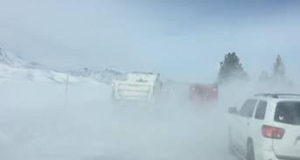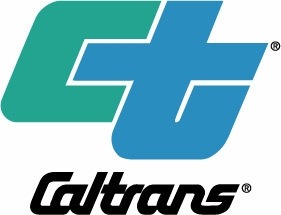FOR IMMEDIATE RELEASE from Cal Trans

Photo courtesy of Caltrans
BISHOP — Caltrans reminds the traveling public to practice caution and be prepared for winter weather driving conditions in the Eastern Sierra Nevada and Owens Valley. With a major winter storm expected to hit the region this week, motorists need to be ready for whatever conditions the weather may bring.
When visiting higher elevations, drivers must carry a set of snow chains in their vehicle. Even vehicles equipped with snow tires need to keep these on hand as certain chain requirement levels will necessitate their use. There are three levels of chain requirements drivers need to be aware of:
- Requirement 1 (R-1): Chains are required on all vehicles except passenger vehicles and light-duty trucks under 6,000 pounds gross weight and equipped with snow tires on at least two drive wheels. All vehicles towing trailers must have chains on one drive axle. Trailers with brakes must have chains on at least one axle.
- Requirement 2 (R-2): Chains or traction devices are required on all vehicles except four-wheel/all-wheel drive vehicles with snow-tread tires on all four wheels.
NOTE: Four-wheel/all-wheel-drive vehicles must carry traction devices in chain control areas.
- Requirement 3 (R-3): Chains or traction devices are required on all vehicles, no exceptions.
Before heading out onto the road, drivers should check to see what type of tires are on their vehicle. Depending on the tire, they may not be required to install snow chains in lower chain requirement areas. Snow-tread tires are marked with a symbol of a mountain snowflake while mud & snow tires, which are also accepted, are marked with the letters “M” and “S.” However, motorists will be required to apply chains to these types of tires if there is not enough tread.
Drivers should refrain from relying on driver-assist technology when traveling in snowy and icy conditions. Many of these features use cameras to operate, and the build-up of snow, ice, and salt from the roadways can impact their function. Cruise control use should be avoided as it is deactivated by pressing the brakes and doing so on an icy road may cause your vehicle to slide.
A snow duster/windshield scraper should be kept readily available and used to remove any snow that may have accumulated on a vehicle since it was last driven. Snow and ice dropping from the tops of cars, trucks, and SUVs can create hazardous conditions for other vehicles on the road. Snow not removed from the top of a vehicle is considered an unsecured cargo load and can result in a traffic fine.
In the event of an extended delay, it’s suggested drivers keep the following supplies on hand:
- Snacks & Water
- Flashlight
- Batteries
- Jumper Cables
- Kitty Litter or Sand (for tire traction when stuck)
- Snow Duster/Windshield Scraper
- First-Aid Kit
- A Small Shovel
- An Extra Set of Warm Clothes/Blankets
- Full Tank of Gas
During snowy weather, there are a few tips drivers need to remember to stay safe on the roads. When driving in areas with chain control restrictions, the speed limit is reduced from the posted speed limit down to 25-35 miles per hour for all vehicles. Even if chains are not required, drivers should travel at a safe speed when roads are wet, icy, or covered in snow. Caltrans would also like to remind everyone to give snowplows enough room to work. Stay at least four car lengths back from a snowplow and refrain from passing them.
Information on road closures, chain control requirements, and potential high wind advisories can be found on the Caltrans QuickMap app and website, or by calling the Road Condition Hotline at 1-800-427-ROAD (7623).

















